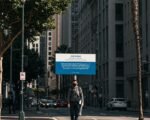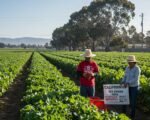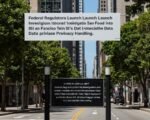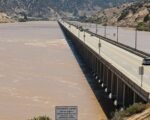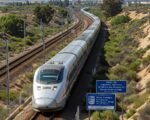San Francisco Welcomes Significant Surge in Asian Visitors
A substantial increase in international tourism is providing a notable boost to San Francisco’s economy, driven primarily by a significant rise in arrivals from key markets across Asia. This trend is detailed in a comprehensive report released by the San Francisco Travel Association on May 20, 2025, highlighting a surge that not only underscores the city’s enduring global appeal but also presents new opportunities and challenges for urban infrastructure and services.
Key Findings of the SF Travel Report
The report, covering the second quarter of 2025 (Q2 2025), reveals a remarkable 25% year-over-year increase in tourist arrivals specifically from select Asian markets. This growth rate represents a significant acceleration compared to previous periods and substantially influences the overall international visitor statistics for San Francisco. The San Francisco Travel Association’s analysis positions these select Asian markets as increasingly vital to the city’s tourism sector’s vitality and future growth prospects.
The Catalyst: Air Travel Deregulation
The surge in visitor numbers from Asia is attributed, at least in part, to recent U.S.-Pacific air travel deregulation policies. These policy changes have aimed to liberalize air travel markets, facilitating increased capacity, potentially introducing new direct routes, and fostering greater competition among airlines operating trans-Pacific flights. The resulting enhanced connectivity and potentially more accessible airfares are believed to have significantly reduced barriers to travel, making San Francisco a more attainable and attractive destination for a wider segment of the Asian population interested in visiting the United States.
Impacts on San Francisco’s Economy and Infrastructure
The influx of these new visitors is already having tangible effects across San Francisco’s urban landscape and economy. The hospitality sector is experiencing heightened demand across various segments, including hotels, restaurants, retail establishments, and local tour operators. This increased business activity is leading to a positive impact on hiring, with businesses actively seeking to expand their workforce to manage the higher volume of customers and provide quality service. The tourism boost supports a wide range of jobs, from entry-level positions to management roles, contributing positively to the local employment landscape.
Concurrently, the surge is placing increased demand on the city’s public transit infrastructure. The report specifically notes a significant increase in usage of the Municipal Railway (MUNI) system by these visitors. MUNI serves as a critical mode of transportation for tourists navigating the city’s diverse neighborhoods and attractions, and the added ridership highlights the vital role the transit system plays in facilitating the visitor experience.
Addressing the Strain: Transit and Site Management
In response to both the opportunities and the challenges presented by this tourism boom, city officials are prioritizing reviews of key infrastructure funding. The report highlights that authorities are expediting reviews of Proposition K (Prop K) funding allocations. Prop K, a dedicated local funding source typically allocated towards transportation and infrastructure improvements within the city, is being considered for accelerated deployment specifically towards MUNI upgrades. The aim is to enhance the transit system’s capacity, frequency, and overall efficiency to better accommodate the increased ridership from both residents and visitors.
However, the San Francisco Travel Association’s report also issues a clear warning: without coordinated management strategies, the increased visitor volume could place significant strain on the capacity and quality of experience at some of San Francisco’s most popular tourist sites. Specific concerns are raised regarding locations like Fisherman’s Wharf, known for its high density of attractions, dining, and shops leading to potential pedestrian congestion, and the expansive yet heavily visited Golden Gate Park, where popular areas and facilities could become overcrowded, impacting both the visitor experience and the park’s resources.
Looking Ahead: Balancing Growth and Sustainability
The potential strain on these iconic locations necessitates proactive and strategic planning. The report implies that effective coordinated management strategies must be developed and implemented swiftly to manage visitor flow, preserve the quality of the visitor experience, and minimize potential negative impacts on local infrastructure, the environment, and the daily lives of residents. Such strategies could involve improving wayfinding and signage, enhancing public amenities at key sites, promoting visits to less crowded alternative attractions, implementing traffic management solutions around popular destinations, or even exploring timed entry systems for particularly sensitive or popular locations.
The San Francisco Travel Association’s May 20, 2025 report serves as both a validation of San Francisco’s status as a premier global travel destination and a timely call to action for city officials and tourism stakeholders. Ensuring the continued growth of tourism from key international markets, like those in Asia benefiting from recent air travel reforms, requires a balanced approach that leverages the economic benefits while investing in and managing the infrastructure necessary for sustainable growth that benefits both visitors and the local community.












